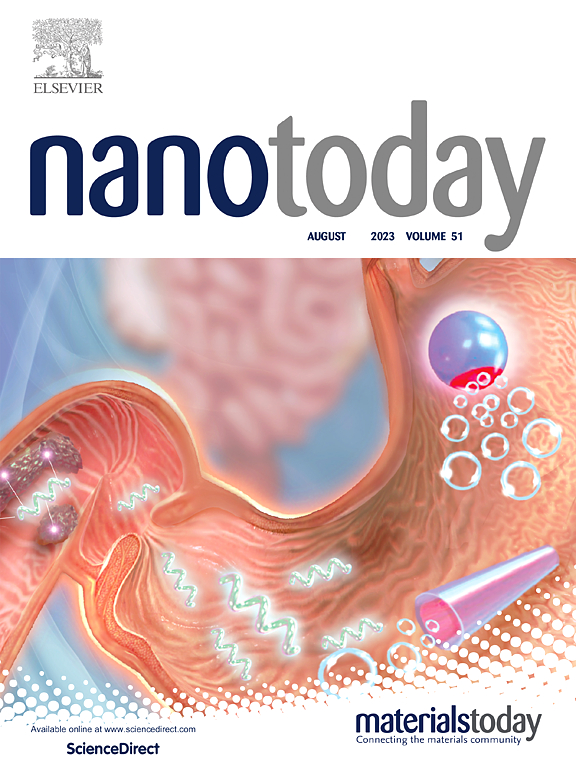A hierarchically programmable DNA nanodevice for spatiotemporally selective imaging of mitochondrial microRNA in cells and animals
IF 10.9
1区 材料科学
Q1 CHEMISTRY, MULTIDISCIPLINARY
引用次数: 0
Abstract
DNA nanodevices remain at the forefront of bioimaging efforts within living cells, yet most are constrained by the undesired off-site activation and the insufficient subcellular precision. Herein, we sought to overcome this limitation by developing a hierarchically programmable DNA nanodevice (HPDN) that enables spatiotemporally selective imaging of mitochondrial microRNA (miRNA) with improved detection accuracy. Specifically, the sensing function of HPDN is silent by the elaborate introduction of an abasic site and a photocleavable linker, but can be hierarchically activated by endogenous human apurinic/apyrimidinic endonuclease 1 (APE1) in the cytoplasm and exogenous ultraviolet light after targeted mitochondrial localization, allowing for mitochondria-specific miRNA imaging in cells and animals. It is demonstrated that the HPDN system promises a robust mitochondrial miRNA imaging with reduced off-tumor signal leakage, thus enhancing the tumor-to-background ratio. Moreover, this system is employed for the visualizing the APE1-mediated drug resistance in tumor cells, facilitating the advancement of tumor diagnosis and therapeutic evaluation. Therefore, this work illustrates a comprehensive and powerful biosensing toolbox with great potential for precise biomedical applications.
用于细胞和动物线粒体microRNA时空选择性成像的分层可编程DNA纳米器件
DNA纳米器件仍然是活细胞内生物成像工作的前沿,但大多数都受到不希望的非现场激活和亚细胞精度不足的限制。在此,我们试图通过开发一种分层可编程DNA纳米器件(HPDN)来克服这一限制,该器件能够在提高检测精度的情况下对线粒体microRNA (miRNA)进行时空选择性成像。具体来说,HPDN的传感功能是沉默的,通过精心引入一个基本位点和一个可光切割的连接体,但可以通过细胞质中的内源性人无尿嘧啶/无嘧啶内切酶1 (APE1)和外源紫外线在靶向线粒体定位后分层激活,从而允许在细胞和动物中进行线粒体特异性miRNA成像。研究表明,HPDN系统有望实现强大的线粒体miRNA成像,减少肿瘤外信号泄漏,从而提高肿瘤与背景的比例。此外,该系统还可用于肿瘤细胞中ape1介导的耐药可视化,促进肿瘤诊断和治疗评价的进步。因此,这项工作说明了一个全面而强大的生物传感工具箱,具有精确生物医学应用的巨大潜力。
本文章由计算机程序翻译,如有差异,请以英文原文为准。
求助全文
约1分钟内获得全文
求助全文
来源期刊

Nano Today
工程技术-材料科学:综合
CiteScore
21.50
自引率
3.40%
发文量
305
审稿时长
40 days
期刊介绍:
Nano Today is a journal dedicated to publishing influential and innovative work in the field of nanoscience and technology. It covers a wide range of subject areas including biomaterials, materials chemistry, materials science, chemistry, bioengineering, biochemistry, genetics and molecular biology, engineering, and nanotechnology. The journal considers articles that inform readers about the latest research, breakthroughs, and topical issues in these fields. It provides comprehensive coverage through a mixture of peer-reviewed articles, research news, and information on key developments. Nano Today is abstracted and indexed in Science Citation Index, Ei Compendex, Embase, Scopus, and INSPEC.
 求助内容:
求助内容: 应助结果提醒方式:
应助结果提醒方式:


